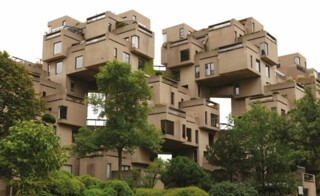Concorde was seen in the sky over West London for the first time in late June 1969. Less than a month later Neil Armstrong stepped from Apollo 11 onto the moon. The future had arrived. It was tangible, it was thrilling, it was now. We came to believe that we were all part of an adventure without end. This was just the beginning, the new beginning. What we didn’t realise was that this was it. A peak had been achieved. The only way was down. We would wonder what had happened to that chimera. Had it been nothing more than an evanescent abstraction? A temporal analogue of Neverland? Had Laika died in vain?
Nor did we realise we were deluding ourselves that we were ‘part of it’. For this thing called The Future seems in retrospect to have been no more than a spectacle, created by the optimistic few for the optimistic many, the readily gulled multitudes who had faith in technological seers just as an earlier generation had had faith in Great Men. Not such a dangerous faith but one that was equally indicative of an indiscriminate appetite for change and enthusiasm for experiment no matter the consequences – should there be any. The recondite wheezes, dystopian prophecies, soft-brained schemes and social essays Douglas Murphy scrutinises in Last Futures: Nature, Technology and the End of Architecture (Verso, £20) mostly led nowhere and spawned no progeny.
Perhaps one should write ‘have’ mostly led nowhere, because there is still time, an infinity, for them to be exhumed in the way that, say, a material like concrete and a form of governance such as theocratic dictatorship have been. More likely they are stalled rather than extinct. It is probable, for instance, that circumstances propitious to the revival of widespread architectural determinism will recur – in an amended form, of course. Sure, it’s a practice that smacks of the authoritarian’s stick and the behaviourist’s carrot, but moods and appetites change. Ideologies and their expressions are as susceptible to fashion as hairdos.
Given that petty bossiness and online manipulation are everywhere to be found it is hardly surprising that the smartest of smart buildings are already being programmed to exercise control over us – caring control, softly spoken – and with a degree of subtlety that quite evaded B.F. Skinner and still evades the uniformed gorillas who patrol gated ‘communities’ and apartment complexes. So far the patrons of this new, chummy determinism are the barons of parallel reality and fiscal mockery – Apple, Google, Amazon etc. Skinner’s bludgeon may be absent, his menu of reinforcements may be diluted but his intentions stretch from the grave. According to one of Norman Foster’s apparatchiks working on the Apple project, ‘We have a building that is pushing social behaviour in the way people work.’ Maybe not so chummy. While over at Google: ‘We … hope to bring new life to the unique local environment … enhancing burrowing owl habitats.’
Among the other architects on this West Coast gravy train are, predictably, those consummate exterior decorators Frank Gehry and Thomas Heatherwick. They are unlikely to cede control to the rodents inhabiting their bespoke boxes which plainly derive from the biospheres and domes of the late 1960s and 1970s. Those are among the more feasible, more tested, hence more repeatable forms of that era. Once these megalomaniac yet affectless schemes are complete, drip-down will occur as it never does in the pecuniary world. We will witness supply-side aesthetics. It is characteristic of the architectural trade’s insensitivity that forms conceived by Buckminster Fuller should be replicated by schemes pandering to the most ruthless of modern employers. It was Fuller’s conviction that technology would render labour redundant, that physical drudgery would be eliminated and intellectual activity would replace it. Fifty years ago such hopes were not reckoned odd. Far from it, they were at the core of establishment thinking. Technological innovation might foment moral progress or at least educational progress. The Open University was not created by cranks. ‘A crank is a crank only until he has been proved correct.’
Gehry and Heatherwick will, as ever, be strenuously plagiarised by their flocks of unimaginative disciples who will, then, be making copies of copies. But so what? There are many more baroque buildings of the Edwardian era than of the brief Baroque era in Britain; aristocratic palaces were replicated as offices for ranks of ledger clerks with scratchy dip pens. Today, offices and labs whose stylistic precursors were built expressions of liberty and the common good will be crammed with harassed interns patronised by the bogus amiability of first names.
Nifty, if ethically questionable, thefts from Fuller (and Frei Otto) are among Murphy’s happier topics. And on the penultimate page he mentions Elon Musk’s Hyperloop projects, which have their origins in the work of the English engineer Eric Laithwaite, whose promising trials of magnetic levitation were shortsightedly thwarted by the Heath government’s withdrawal of funding. Maglev might have become a commercial reality had Laithwaite, like so many of his contemporaries, migrated to the United States and, like Hyperloop, had a test track in Nevada rather than in the Ouse Washes alongside the Old Bedford River (where its piloti are still visible). It did at least get off the drawing board. More usually the technological failures and pusillanimous losses of nerve that make up Murphy’s galère of yesterday’s cancelled tomorrows have left no physical trace.
In many instances there was nothing to leave traces of. Paper architecture bequeaths no ruins. Archigram (‘often embarrassingly “groovy”’) created the platonic ideal for an entirely novel sort of building, but it was Richard Rogers and Renzo Piano who, in the most audacious of creative heists, designed the Pompidou Centre. The proposed new town of Hook in north Hampshire was never built, yet John Gold’s book about its planning became an advertisement for British urbanism: the cannily gauged illustrations persuasively suggest a place both modern and homely. The more or less contemporary new town of Cumbernauld became a different sort of advertisement for British urbanism – that’ll be because Cumbernauld got built. It could be visited. It could promise the visitor a jolt of despair. Even the most fervent advocates of megastructures were shocked. It appeared, still appears, simply to have happened. The idea that its centre might have been designed, might have been deliberately wrought, is surely fantastical. But there was an architect, one Geoffrey Copcutt. Copcutt had this to say: ‘Like a jeweller fashioning precious metal I hammered cross-sections and shaped landscape to form an urban morphology.’
Extravagant projects were announced with such frequency that they ceased to seem extravagant. A solar-oriented, pyramidal headquarters in a field for Northamptonshire County Council. Why not? A floating town off the Norfolk coast. UEA’s neighbouring ziggurats. Space colonies. Arctic cities. James Stirling’s particularly daft proposal to link Derby’s new civic centre to the town’s past by propping up the façade of the old Assembly Rooms at 45 degrees. Every week brought forth a blinding new notion.
Murphy’s catholic survey has a straitened cast. In this it recalls two previous distinguished studies of the utopian urge, W.H.G. Armytage’s Heavens Below and Gillian Darley’s Villages of Vision. The same people crop up over and again in different contexts wearing different hats. Utopians move from one discipline or commune or guru or ‘philosophy’ or technology to the next in just the way that the religiously susceptible move from one faith to the next. There is of course a crossover. It takes a particular sort of mind – credulous or inquisitive, according to taste – to undertake constant tourism of the unprovable, to enjoy the unsupported conviction that there are big solutions rather than billions of unanswerable questions. Take Stewart Brand, a sometime student of biology (under Paul Ehrlich) and photography who staged happenings and joined Ken Kesey’s Merry Pranksters as an apprentice Beat. He visited Native American settlements and Midwest communes. He was fascinated by ‘communal living, system theory, cybernetics, geodesic domes, computers, the space programmes’. When he inherited some money he combined these interests in the Whole Earth Catalog, a series of manuals for the footsoldiers of the communal counterculture which soon collapsed in animosity and arguments about the hierarchy of anti-hierarchy. But not before Brand had made a fortune and moved on to ‘hacker communities’ and the ‘liberation’ that would be achieved by personal computers. Next stop: just when, in Murphy’s inspired phrase ‘the enclosure of the digital commons was beginning’, Brand started a new magazine called CoEvolution Quarterly which revived the idea of space colonies. Though it had the support of Carl Sagan, James Lovelock and Buckminster Fuller it came to nothing, but there’s time yet.
Send Letters To:
The Editor
London Review of Books,
28 Little Russell Street
London, WC1A 2HN
letters@lrb.co.uk
Please include name, address, and a telephone number.


